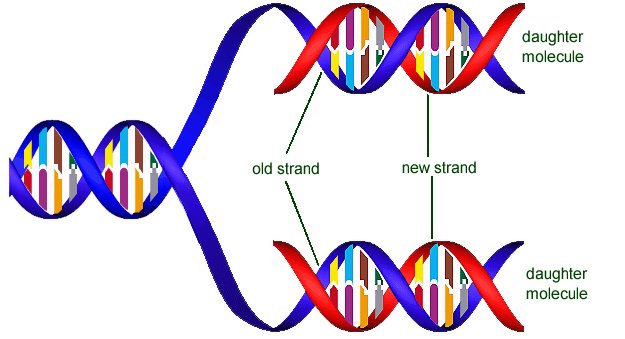DNA Replication
DNA replication takes place during interphase in the nucleus of the cell. It is a semi-conservative process. The daughter DNA molecules produced consist of one progeny and one parental strand.
Mechanism of DNA replication
1. DNA molecule unwinds and the two strands are separated with the breaking of hydrogen bonds between the bases.
2. Nucleotides with the appropriate complementary bases then slot into places opposite the exposed bases on each strand, that is A with T and C with G.
3. Hydrogen bonds are formed between complementary bases and hold them in place.
4. The sugar of one nucleotide is then joined to the phosphate of the next nucleotide to form a new polynucleotide chain.
These processes are dependent on a number of enzymes, including DNA polymerase.
Very few errors are made during DNA replication because DNA polymerase effectively "proof-reads" the new molecules it is making.
This enzyme will only link a new nucleotide into the growing chain if the previous one is paired correctly.
Copyright(c)2002 HKIEd. All Rights Reserved.
請採用 Internet Explorer 4.0 或 Netscape Navigator 4.0 或以上瀏覽器,並以800x600解析度瀏覽。

